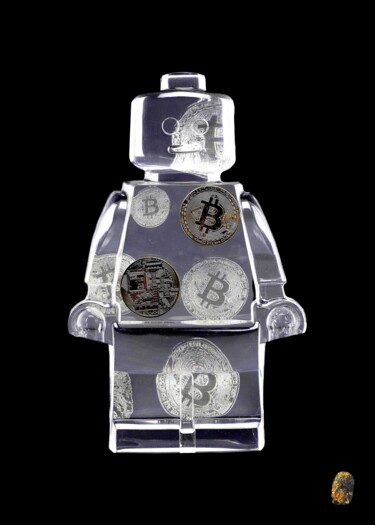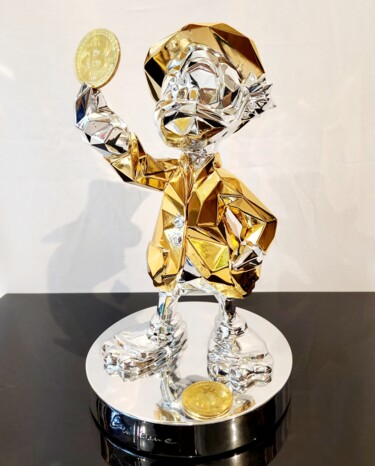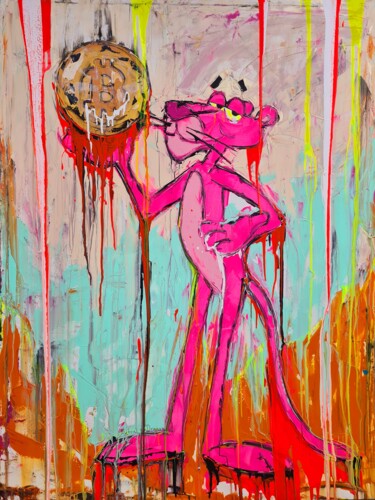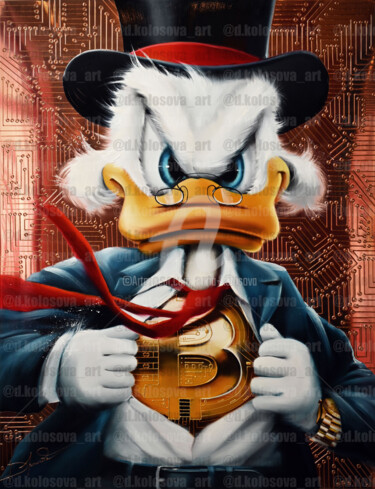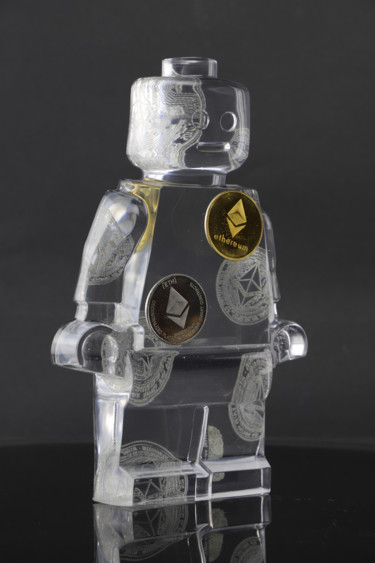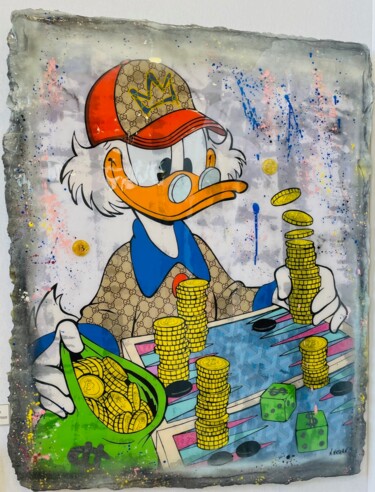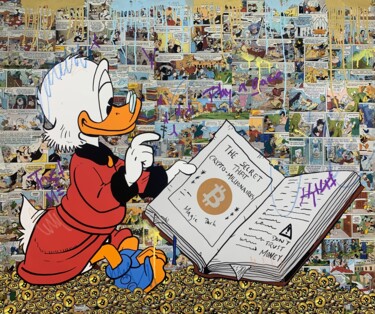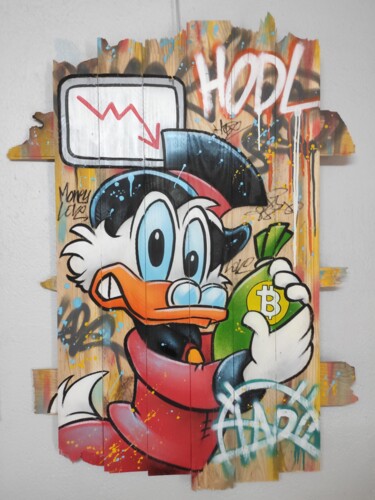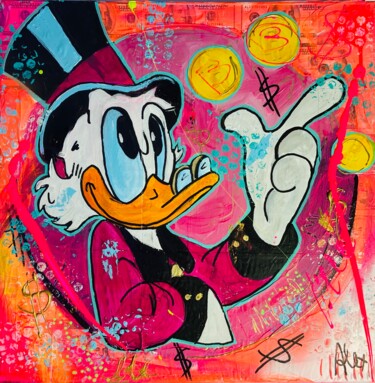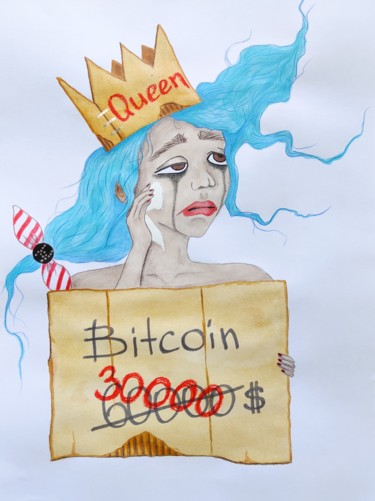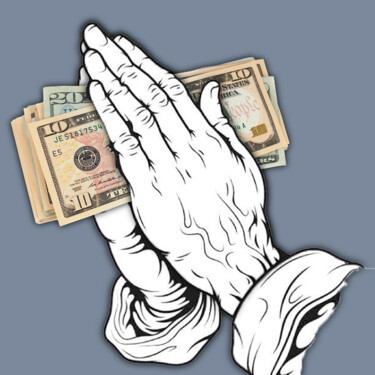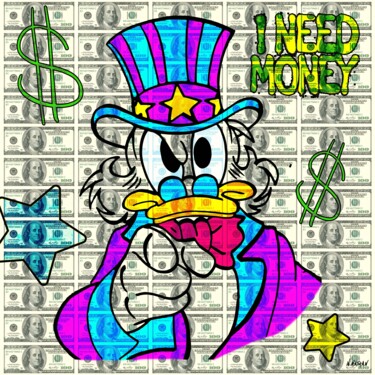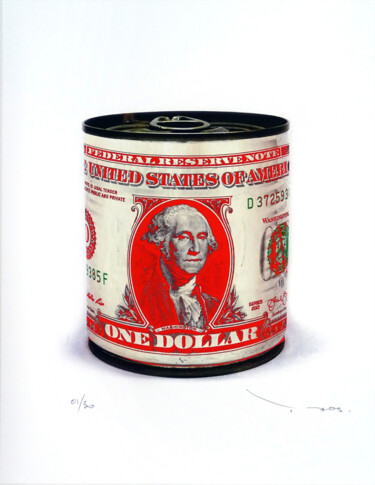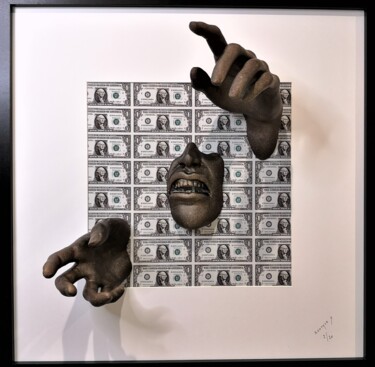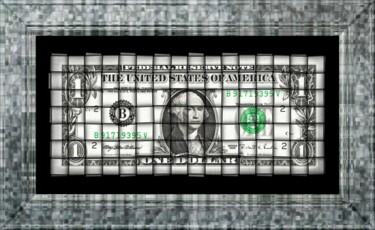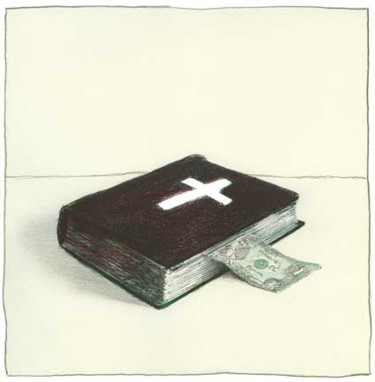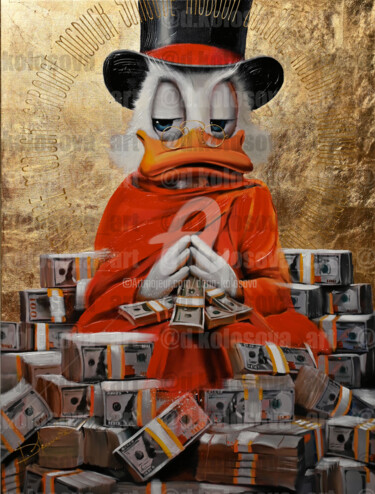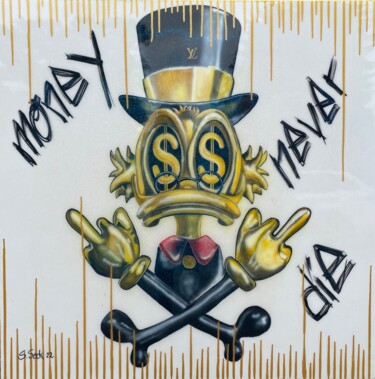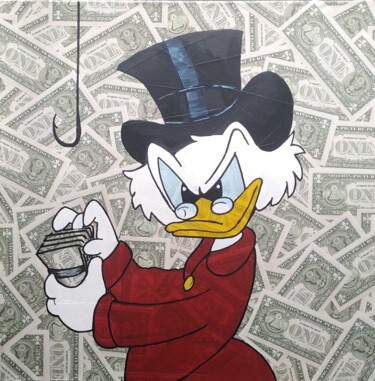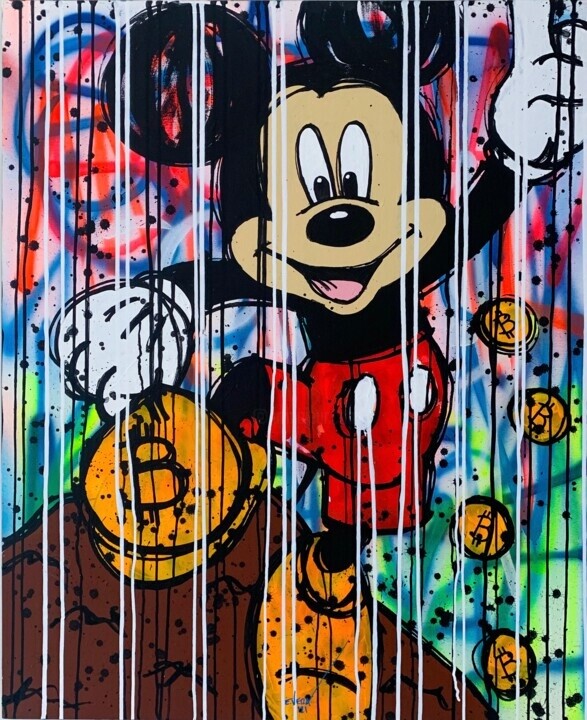 CRYPTO EMPOWERMENT (2021)Painting by E Vera.
CRYPTO EMPOWERMENT (2021)Painting by E Vera.
Introduction to the concepts of collecting and the art market
What are the ancestors of the private collections of our times?
Collecting is a very ancient phenomenon, so much so that already in the Mesopotamian civilizations, among the royalty and elite classes of the 3rd century B.C., its presence can be documented, which was followed in the Egyptian civilization, which, like even the prehistoric civilization, used to gather material of various kinds inside tombs, as well as in the residences of the powerful. In any case, interest in collecting more properly so called, to be understood therefore as that activity driven by the human desire to achieve social affirmation, flaunt power, assert one's culture or seek protection after death, is delineated only from the Greek world, a period in which the display of materials, as well as the awareness of their historical-artistic value, takes shape in communal spaces or within temples and private structures mainly aristocratic. This ideology was consolidated in the Roman world, a civilization with a pronounced taste for private collecting, so much so that it is well known that at that time the ruling classes made ample demand for copies of Greek statues, to adorn their homes, with a care that well exemplifies the lawyer, politician writer, orator and Roman philosopher Marcus Tullius Cicero, who, turning to Atticus, pressed to procure sculptures to adorn the Villa of Tuscolanus, seeking to hoard only those in marble, and thus in keeping with the decor of the rooms for which they were intended. Unfortunately, the aforementioned customs of Roman collecting were put aside in the Middle Ages, a period when practical purposes far outweighed the cultural-symbolic ones, which came back into vogue in the Renaissance period, an era mainly based on the classical model illustrated above. It is in this context that the studiolo takes shape, a room, which, par excellence reserved for individual study, could contain books, works of art and collections of coins, but also refined gems, precious stones and cameos, objects often closed in cupboards, placed in a room often decorated with frescoes, which was meant to represent the passions and interests of the owner, who allowed only a select few access. For this reason oftentimes these spaces ceased to exist with the death, or by the very will, of those who had created them, generating the dispersion of the collected objects, which, in many cases, were destined for the families to which they belonged. To find the "model" on which our modern private collections are based, however, we must come to the wunderkammer, particular rooms in which, from the 16th century to the 18th century, collectors used to keep collections of extraordinary objects, as well as prints, books, paintings, and archaeological finds, collected because of their intrisic and extrinsic characteristics, within a room, the walls of which were lined with wooden scans, which, replete with drawers, shelves, cabinets and glassware, housed a multitude of diverse and oft-catalogued objects, a mirror of the owner's interests to be shared with friends and distinguished visitors. In fact, if the studiolo was primarily born as a place of solitary and intellectual gathering, the wunderkammer was born precisely with the purpose of making itself a container for rare and valuable objects to be displayed.
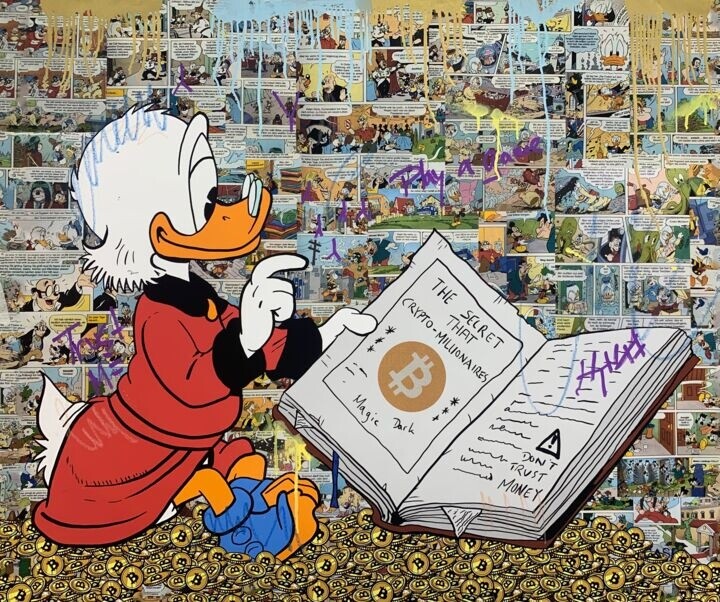 BITCOIN (2021)Painting by Caspa.
BITCOIN (2021)Painting by Caspa.
 I LOST MY BITCOINS (2021)Painting by San São.
I LOST MY BITCOINS (2021)Painting by San São.
Brief history of the art market: from origins to technology
Few people know that the art market as we understand it today, or nearly so, has its origins in seventeenth-century Holland, the context where the first true free-market economy for art came into being, initially in the form in which works were resold and not purchased directly from their creator. In fact, it was furniture and clothing merchants who often also sold paintings and sculptures, of which they did not specialize until later, that is, when art appreciation spread to the Netherlands. It was not until the next century, however, that art galleries came into being, places that transformed collecting into a much more visible activity. Now that we have an idea of the oldest art market we can summarize its evolution by going through several key historical moments, which brought us to the current situation, namely: the 1960s, 1970s, 1980s, 1990s and 2000s. If during the former the production of art became commercialized and monetized, becoming a real enterprise, in which investing and considering certain artists as expensive stars was now a widespread custom, in the latter period investors increasingly saw art as an alternative asset to be capitalized, a fact that took shape, both in the high value placed on contemporary art and in the growing strength of the art market itself. With the arrival of the 1980s and 1990s, the aforementioned trends exploded into a worldwide sales boom, while in the later 2000s, despite the crisis of 2009, the art market remained resilient. In conclusion, as far as the period from 2010 to 2020 is concerned, this time frame was marked at first by the emergence of the online market and, secondly, by the gradual, and currently ongoing, emergence of cryptocurrencies and NFTs, so much so that giants of the caliber of Sotheby's and Christie's have devoted entire auctions to NFTs. It is precisely the latter trends that will be explored through the analysis of some works by Artmajeur artists, such as those of: Sabrina Seck, Jonathan Fabbro and Natalya Lysenko.
 SÉRIGRAPHIE GOLD BITCOINS (2022)Printmaking by Vincent Sabatier (VerSus).
SÉRIGRAPHIE GOLD BITCOINS (2022)Printmaking by Vincent Sabatier (VerSus).
 FRIDA FOREVER (2023)Digital Arts by Otto Frühwach.
FRIDA FOREVER (2023)Digital Arts by Otto Frühwach.
Otto Frühwach: Frida forever
Frühwach's portrait represents a good buying opportunity not only because it depicts an iconic subject in art history, but also because the Frida in question is portrayed laughing, when in the Mexican painter's artistic output, which is rather rich in self-portraits, she mainly limited herself to immortalizing herself intent on staring at the viewer with a rather serious air. The "miracle" of the smile was generated by Artmajeur's artist through the use of artificial intelligence (AI) programs, aimed at constructing images through generative algorithms and deep learning techniques, capable of producing art autonomously, that is, without the imput of human artists. AI, founded as an academic discipline back in 1956, only officially landed in the art market in 2018, which is when Obvious's Portrait of Edmond Belamy was sold at auction by Christie's for $432,500. That episode set off a commercial wave of AI works, so much so that in 2019 the Barbican in London presented the exhibition AI: More Than Human, while in September 2022 the artificial art generator UnrealArt hosted a pop-up exhibition in Amsterdam. In any case, the actual triumph of AI still appears to be far off, as the aforementioned events have often been met with cynicism by critics, collectors and curators, who do not want to recognize artificial intelligence art in the same way as more conventional methods. Opposed to the above, however, are the interests of the art market, which, rich in a seemingly unlimited supply of beautiful and exciting images, sees AI as an inexhaustible gold mine, possible to be converted into the popular NFTs as well.
 QUEEN NFT (2021)Painting by Jonathan Fabbro (John fabb).
QUEEN NFT (2021)Painting by Jonathan Fabbro (John fabb).
Jonathan Fabbro: Queen NFT
Regarding the aforementioned NFTs (non-fungible tokens), they constitute the deed and certificate of authenticity of an asset, which, digital or physical, is registered on a Blockchain, i.e., a growing structure of irreversible data, as once registered, they cannot be modified without altering all subsequent contents. As a result, NFTs are not mutually interchangeable, constituting proof of ownership, but this does not necessarily guarantee copyright, intellectual property or alter legal rights to the associated digital file. To put it simply: NFTs, in the arts, also known as Crypto art, refer to works of art that exist in digital form and are associated with a unique identification code created through tokenization on the blockchain. This identification code acts as a digital certificate, establishing the authenticity and ownership of the artwork. I have come to these talks, as the monkey queen immortalized by Fabbro represents one of the latest trends in the art market, as it repurposes, in a unique and original way, the Bored Apes from NFT's collection built on Ethereum's blockchain, aimed at presenting cartoon images of monkeys procedurally generated by an algorithm. It is important to point out that the parent company of Bored Ape, namely Yuga Labs, has been valued, as of 2022, at $4 billion, as the said collection has turnover of over $1 billion, not to mention that many celebrities have also purchased such non-fungible tokens, just Justin Bieber, Snoop Dogg, Gwyneth Paltrow, etc.
 A MODERN REALITY (2022)Painting by Natalya Lysenko (Nat Lysen).
A MODERN REALITY (2022)Painting by Natalya Lysenko (Nat Lysen).
Natalya Lysenko: A modern reality
Just as suggested by the title itself, Lysenko's painting depicts the most contemporary reality, within which a businessman, armed with a cigar to be savored along with an expensive bottle of wine, goes to great lengths to accumulate Bitcoin, rather than dollars, so much so that his intent even emerges from the symbols, which are superimposed on his gaze, clearly depicting the logo of the aforementioned cryptocurrency. The latter virtual currency is designed to act as money, eliminating the need for third parties to be involved in financial transactions, such that Bitcoin is not considered a traditional currency, but rather a highly volatile store of value, determined solely by the forces of supply and demand. Without going into further details, the very symbol depicted by Lysenko would represent the first update of Bitcoin's logo, which, in this case, was repurposed to present a kind of dollar image, set on a gold background and quite distinct from the current version, aimed at drawing inspiration from MasterCard's orange design. Finally, speaking of the art market, it is good to make it known how Bitcoins turn out to be not only a form of payment, but also an artistic subject, which, placed within paintings, sculptures, etc., captures the attention of enthusiasts interested in purchasing BTC-themed works, which have generated a growing demand for this type of artistic depiction.


 Olimpia Gaia Martinelli
Olimpia Gaia Martinelli
